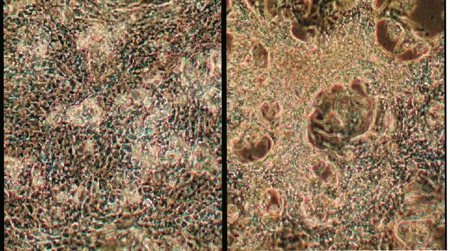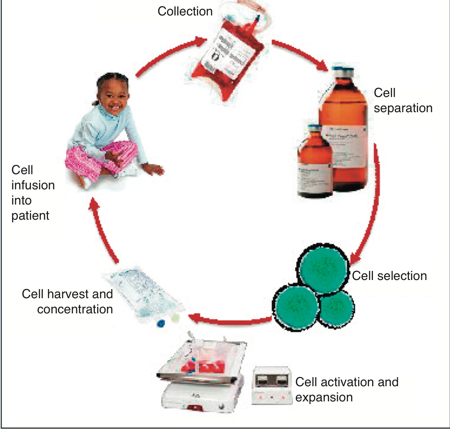Whether looking at it from a health perspective or a cosmetic one, ageing has been one of the hottest of topics for research in past decades. The insights that cell biology provides are truly staggering as to both the complexity and the possible future therapies. We are, as a race, increasing our longevity at a remarkable rate – five hours for every 24 hours that we grace this planet. So living longer, living younger is a reality, and this provides particular challenges and great opportunities for life science-based sectors such as pharmaceuticals and cosmetics.
Dr Stephen Minger, Chief Scientist, GE Healthcare, speaking at the recent scientific symposium of the UK Society of Cosmetic Scientists, provided a foray through the field of stem cells. His presentation, entitled ‘Innovating preclinical drug discovery and human cell therapy’, looked at the growing application of the ‘immortal’ pluripotent stem cells (PSCs); derived from embryos, they will continue replicating forever, providing they have the correct environment. While there is some controversy and much moral debate on the use of embryos in research, the rewards for future generations may be staggering, in terms of personalised medicine where disease can be tackled, body parts regrown and – ultimately – all disease prevented.
Such possibilities are created in the first six days of life when the PSCs can be extracted and used to create a self-replicating strain. The PSCs can then be guided to form specific stem cells for heart, liver or other key body organs. At the birth stage it is possible to extract the very personal multipotent stem cells from foetal and placental tissue and, of course, the blood cells in the umbilical cord.
Better screening and early stage testing using cell therapies is a sound financial investment as well as a spectacular improvement on the efficiency of drug discovery
A very practical but non-personal application from this science is the early stage testing of new drugs for toxicity to different body cell types. With this technology it is possible to identify drugs with toxicity to one or more organs at a much earlier stage, enabling products reaching clinical trial stage and beyond to have a better chance of success and thus reducing the overall costs of drugs. It is estimated that the Vioxx drug disaster cost Merk US$30bn, illustrating that better screening and early stage testing using cell therapies is a sound financial investment as well as a spectacular improvement on the efficiency of drug discovery. It does of course mean more pipeline drugs being rejected at an early stage – but with roughly half of drugs reaching clinical trial stage currently likely to be rejected or have major setbacks, it is not just the big Vioxx-type disasters that could be prevented.
PSCs can be evolved depending on the required tissue type on which the drug will be applied. For example, heart cells derived from stem cells in the form of cardiomyocytes (hESC-CM) can be evolved for use in drug screening for cardio toxicity. Screening uses multi-electrode array (MEA) analysis of hESC-CM to generate multi-parameter data to profile drug impact on cardiomyocyte electrophysiology.

Figure 2: Cardiomyocytes being used in toxicity testing
There can be many reasons why toxicity is not picked up in trials, particularly when testing on animals. Mice, rabbits and dogs may well show toxicity but at much higher dosage levels because of their cells’ differing immunology from those of humans. This can lead to false positives when testing, and trouble much further down the line. Taken back a stage, the rapid screening techniques highlighted by Dr Minger enable drug ingredients to be tested before they are included in a formulation so that a library of ingredient toxicity to different human cell types can be created.
The challenge for personalised medicine is the quantities of stem cells required
The challenge for personalised medicine is the quantities of stem cells required. For example, while there is an almost unlimited supply of PSCs for testing chemicals and drugs for toxicity, when it comes to humans, from the infant stage upwards our bodies are very particular and producing enough stem cells and cords for treatment purposes is more difficult. An adult requires a dose of 100 million cells per kg of weight. Therefore, generating more T-cells – the white blood cells beneficial in restoring immune and memory systems – requires advanced disposable bioreactor technology, such as that being developed by GE Healthcare, which allows individual cell cultivation with an optimised culture and environment.
Not surprisingly, cell therapies present similar potential ‘spin off’ products for the cosmetics world. In its broadest sense, cell therapies enable the effects of active ingredients applied to surfaces (such as skin and hair) to be measured at a fundamental level. Whether it is hydration and anti-ageing for the skin or creating lustre for hair, they all can be reduced to looking at interactions between the specific cell types and the ingredients that formulators might introduce.

Figure 3: Cellular immunotherapy – typical workflow
While this seems more trivial than healthcare needs, it will be important to understand how future cosmetics can keep an ageing population looking good and feeling happy for longer – a big challenge as lives are extended.
Healable polymers and functional hydrogels
Given the extensive use of polymers in the modern age in everything from plastics to synthetic skin, the ability to regain the mechanical and physical characteristics (i.e. self healing) of complex pristine materials after damage is an attractive proposition for healthcare, particularly in terms of producing synthetic skin and adaptive or replacement organs or bone.
The strength of polymers comes from cross linking of the long chain polymers via covalently bonded chemical reactions. If the cross linking is sheared, strength rapidly decreases and the polymer loses structural integrity. Restoration of the physico-mechanical properties of such materials, once fractured, requires either new covalent chemistry to generate additional crosslinks, or long periods of annealing to enable thermal diffusion. Many existing remedies are either impractical or too expensive – but what if materials could be made self-healing?
Professor Wayne Hayes at the University of Reading, talked through his work using polymers where covalent bonds for cross linking were replaced using supramolecular systems. Supramolecular polymers are created via the assembly of monomers held together by noncovalent bonds. This may be using metal-ligand interactions or, as in the case of Prof Hayes’s work, hydrogen bonding. One example would be aromatic rings, such as urea type compounds, where the offset stacking of the hexagons creates a thermodynamic minimum.

Figure 4: Supramolecular Self-Assembly showing how healing can occur through the engagement and disengagement of the structures
Source: University of Reading
This is a conceptually different approach for healing damaged polymers. The bulk material features numerous non-covalent bonds that can hold together a network of oligomer or polymer chains. In this class of healable material, it is (at least in principle) the non-covalent bonding interactions in the structure that break during fracture and reform upon healing. As a consequence, the composition of the healed zone is theoretically identical to that of the bulk material. The development of supramolecular polymers has thus provided opportunities for designing supramolecular networks that possess the inherent ability to self-repair.
Measuring the success of such healing is by the healing efficency (HE) equation:
HE= {MVhealed/ MVpristine} x 100
Work so far has allowed healing integrity of 90%. The amount of energy required for healing this type of polymer is much lower than existing techniques.
Professor Hayes also looked at amphiphilic peptides that are attracting interest in the research community due to their potential in biomedical and bio-nanotech applications. Their self-assembly can be used to create bioactive peptides at the surface of fibrils, tubes, vesicles and other structures. He highlighted the example of a collagen-stimulating peptide amphiphile with promising collagen production and cell proliferation results. Such materials have immense potential in wound healing, tissue scaffolding as well as cosmeceuticals.
Thus use of non-covalent interactions offers a viable route to the generation of materials that have reversible characteristics or chemical reactivity. Using a careful combination of design and synthesis, healable polymer and functionalised gel networks can be realised.
There is growing interest in synthesising ‘soft materials’ that mimic the properties of biological materials such as tissue, proteins, DNA or cells. Such materials may have applications in tissue engineering, drug delivery and other pharmaceutical areas. Professor Hayes went on to look at low molecular-mass organic gelators (LMOGs), the monomeric sub-units that form self-assembled fibrillar networks (SAFINs) that can entrap solvents between strands.
He cited work by Dr Barny Greenland and Matthew Lines who managed to combine a perphenazine antipsychotic and hydrogel to achieve sustained release of the antipsychotic drug for four hours.
3D Printing
3D Printing is being talked about everywhere and Justin Carpenter from 3D Active Printers looked at how, in future, 3D printing will provide replacements of simple everyday household items such as knives and forks through to computer circuits and drug production and delivery mechanisms.
In future, 3D printing will provide replacements of simple everyday household items as well as drug production and delivery mechanisms
Inkjet technology has been used to sputter not just ink but also polymers and materials of many types. More recently, it has been laying down materials in micron or even nanometre layers with precision. The width of the printing defines the detail and, of course, the time taken. This technology is now being applied to optimising tablet designs or fabrication of monodispersed microspheres with pharmacological properties. Ink-jet technology provides a means to deliver active agents and biodegradable polymers in a controllable, repeatable fashion to exact locations and does so in precise amounts with minimal waste, volatiles or degradation of the therapeutic agents.




